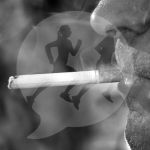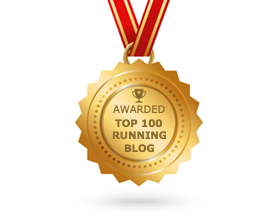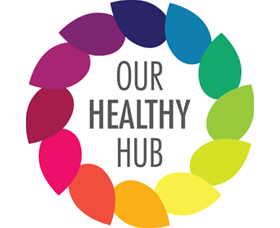The jury seems to be out on whether runners can truly understand their running potential without spending a fortune on scientific tests or other equipment.
There is no denying that many factors are in play…
In his seminal training text Daniels’ Running Formula legendary running coach Jack Daniels cites four key factors or “The Ingredients of Success” –
- Inherent Ability
- Motivation
- Opportunity
- Direction
I would posit that the key item most runners fear they lack is point #1 – Inherent Ability.
Most will be highly motivated (at least initially) to improve and find out what they can achieve with the right training and application. Most will have the opportunity. Running is a very accessible sport with low costs of entry – all you need is shorts, t-shirt and a pair of decent shoes. Most will also have access to tips and guidance on what to do to improve. However, if a runner doubts whether they have inherent ability it will always hold them back.
My goal in writing this article is to challenge all runners to break through that mental straight jacket that is undeniably blocking progress. Ultimately each one of us is completely unique, with our own strengths, weaknesses and potential to improve. As George A. Sheehan famously said – “we are each an experiment of one”. We all have our own characteristics and as humans we can all believe and have faith in what we are truly capable of.
As a competitive runner wishing to improve, it is important that you embrace where you are today and truly believe in what you can achieve tomorrow.
And in the process of acquiring a certain amount of knowledge about exercise physiology and running Key Performance Indicators (KPIs), you can establish your current baseline and from there work out targets for improvement.
Your Current Fitness Level – the key to assessing your Potential
The whole purpose of creating your baseline and a prediction of your potential is to realise where you are today and where you can really go over a reasonable amount of time.
The real key is being sure to understand where you are today.
Rest assured there are many tools available to ensure you can be very accurate in assessing your current position, and from many different angles and perspectives – almost like piecing together a jigsaw. This is your line in the sand. You can then use various improvement factors and predictions to create the vision of the runner you wish to be, or believe you can be.
The critical point is to create the vision of what is possible. Not what is easy. What is truly possible.
A good strategy is to set an initial target, a medium term target and a longer term stretch target. When you have the vision of what is possible you can set a clear Road Map of how to get there and with reasonable timelines. The vision becomes the goal and the goal becomes the Mission. The best philosophy is to make the commitment to keep working until the mission is achieved.
In the words of management guru Peter Drucker “what gets measured gets managed.” It’s amazing how merely understanding your starting point, having a goal and a plan can push you forward.
Focus on YOUR own Key Performance Indicators
I think a common mistake that a lot of runners make is to try compare themselves to Elite athletes.
It is easy and perhaps intuitive to study Elite athletes and in particular their training methods. It’s easy to think “if I can just copy the Elites training I can get the results I desire”. But if there is anything to learn from Elites it is to focus on discipline, desire, patience and consistency.
A comment like “if only I had time to train like an Elite athlete” is surprisingly common. But remember the George A. Sheehan quote – we are each an experiment of one and if you are interested you can find out how “elite” you can be relative to you and your peers.
The key is to understand and respect where you are today and build a plan from there.
How to understand your current fitness level – the 5k time trial
Your current 5k fitness has many clues to your current fitness level and also where you can realistically go in the future. By the way, you could try a shorter time trial but in my view 5k is a great test of both speed and stamina. The time trial certainly shouldn’t be taken lightly and it is recommended that a decent program of walking and jogging has been completed before a proper test. Couch to 5k for example could be a good starting point.
Let’s take a look at my experience. Back in February 2012 I ran my first 5k in 22:39.
This allowed me to understand the following key facts about my current running fitness level (note – I did not take much notice of this at the time but I wish I had) –
- Age Grading -57.1%
- VO2 Max – 43 mls/kg/min
- Lactate Threshold pace – 7m 44s per mile
- Predicted finish time for other key race distances –
- 1 mile – 6:39
- 10k – 47:13
- Half Marathon – 1:44:12
- Marathon – 3:37:14
In addition to the above, if I had taken it upon myself to wear a Heart Rate Monitor (HRM) during the 5k effort I would also have some powerful information regarding how my body dealt with the challenge of running as hard as possible over the distance.
And finally, if I had been interested, I could have had a better appreciation of my weight profile, and in particular my Body Mass Index (BMI).
Although I do not believe in developing an unhealthy obsession with weight it goes without saying your body mass has a large impact on your running performance. Any improvements in the running power to weight ratio will be beneficial.
For now you may be wondering what the above info really means and why it is important?
Age Grade
Well, first of all the Age Grading. The % is the ratio of the approximate World Record for your Age and Gender and your finishing time. This is an excellent way of “normalising” performances across the Age Groups. It allows you to stay competitive no matter how old you are.
As a general guide if your Age Grade is over 90% you can consider yourself World Class, over 80% National Class, over 70% Regional Class and over 60% Local Class. Obviously in my case I fell short of the 60% mark. The key point though is that you get your line in the sand and decide what you are going to do about it! As I write this today, my Age Grade is close to the 80% mark! You can achieve improvements of this magnitude as well.
VO2 Max
The VO2 Max figure is also very important to appreciate where you are on the running spectrum.
The basic science of this is that the figure indicates the maximum rate of oxygen consumption during exercise.
So my time of 22:39 predicts a maximal oxygen update of 43 mls/kg/min. Perhaps more important than the science is the fact that this figure can be used to see where you stand on the running ladder (note – an average untrained male adult would be expected to have a VO2 max of 45 mls/kg/min and world class male endurance athletes can be anywhere in the 80-90 mls/kg/min range). It also allows you to establish a training program for improvement although this is getting more into the realm of the roadmap and plan to move towards your potential.
Lactate Threshold
The Lactate Threshold (LT) pace is extremely important – scientific research over the years has revealed that the pace that you can achieve at your LT is the most important determinant in how successful you can be in distance running. Not only does it determine race performance but it is also critical to establish appropriate training intensities.
Your Current Runners Curriculum Vitae
Taken together, this information creates what I would term Your Current Runners Curriculum Vitae. It sets out your current race performance, your predicted capability over a range of other distances and also an appreciation of how you compare to other runners in your Age Group. You can also establish your current maximum oxygen uptake level (VO2 Max) and your lactate threshold pace which provide an accurate way to appreciate the type of training regime you need to employ to improve.
As mentioned, also understanding your heart rate and BMI would add extra dimensions to the picture and give more clues as to how far improvements can be made.
Once you fully understand your Current Runners CV you will be in an extremely strong position to not only appreciate your future potential but also put in place a proper set of running goals and crucially a training plan over the short, medium and long term to achieve them.
If you would like to understand more about your current fitness level please sign up to the Your Running Potential mailing list to receive regular updates. Kev will contact you directly to offer you a FREE Your Current Runners Curriculum Vitae. See here for a sample Your Current Runners Curriculum Vitae. Please note the minimum required info is as follows:
- Name
- Date of Birth
- Height
- Weight
- Gender
- A recent running PB over any of the following distances – 5k, 10k, Half Marathon, Full Marathon
- Heart Rate Max (optional)
If you have any questions please contact Kev Richardson direct at: kevin.richardson3910@hotmail.co.uk

About Kev Richardson
Having shown some promise as a runner at school Kev finally got back to the sport at the age of 30 in 2012. Kev will be regularly contributing to Full Stride and will initially be contributing a series of articles for Beginner runners with a desire to improve their running.


























Great post Kev, best of luck with the website.
I loved this article! I have just recently taken up running again after giving it up after repeated knee surgeries. I may be slow, but I can see improvement with every run I run!
This was an excellent read, Kev! I learnt so much from it!
Thanks again for writing this great post Kev. Lovely to have you onboard again!
Looking forward to reading more Kev, nice one.
Hi all – thanks for the comments – really appreciate it!